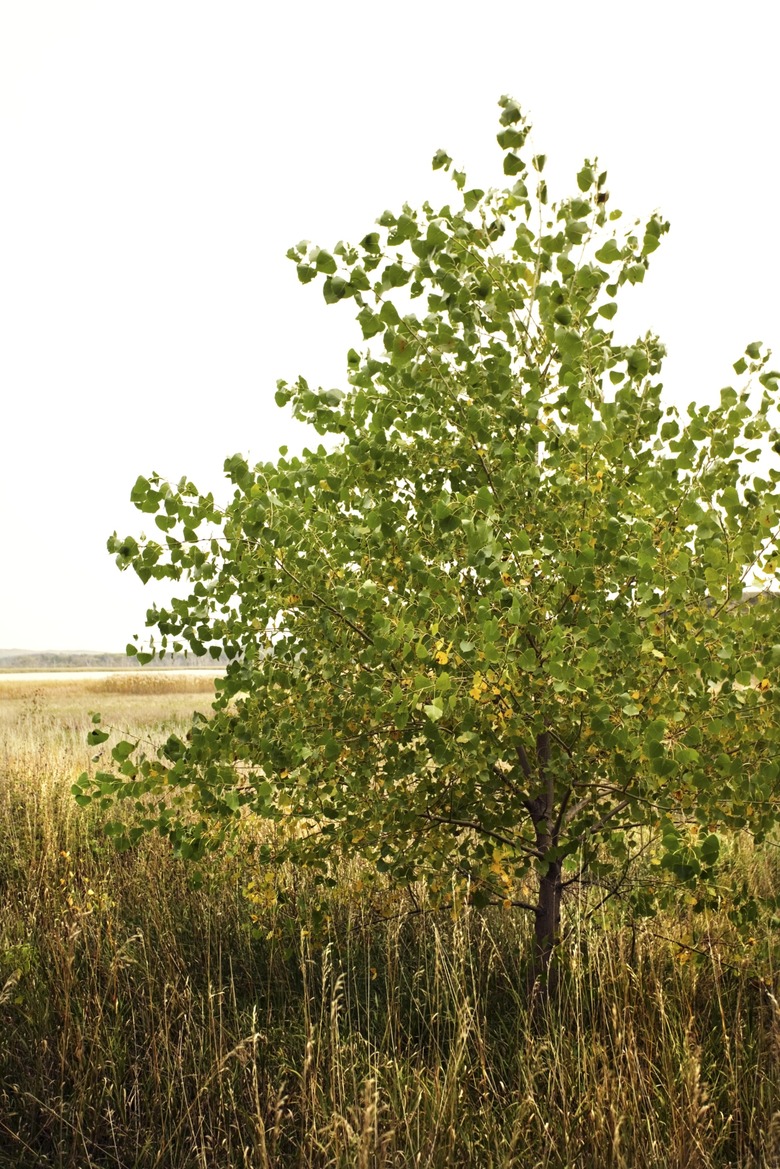How To Tell If Your Catalpa Tree Is Dying?
The catalpa tree grows in United States Department of Agriculture plant hardiness zones 5A through 9A. There are two varieties: the Northern Catalpa (Catalpa speciosa) that grows to 90 feet tall and the Southern Catalpa (Catalpa bignonioides) that grows to 40 feet. Both have large, coarse, heart-shaped leaves and a broad open growth habit. Catalpa trees suffer from a variety of problems that are rarely fatal. However, even when a tree is severely affected, it is difficult to tell if your catalpa tree is dying
Leaf Drop
Step 1
Catalpa trees experience leaf scorch followed by a shedding of the leaves during hot dry weather. The leaf drop can be extensive and cause concern, especially when the leaf drop is combined with dropping fruit clusters, which hang like long bean pods in mid-summer. The leaf and fruit drop, although messy, is rarely fatal, although it can be an unattractive nuisance.
- The catalpa tree grows in United States Department of Agriculture plant hardiness zones 5A through 9A.
- There are two varieties: the Northern Catalpa (Catalpa speciosa) that grows to 90 feet tall and the Southern Catalpa (Catalpa bignonioides) that grows to 40 feet.
- The leaf drop can be extensive and cause concern, especially when the leaf drop is combined with dropping fruit clusters, which hang like long bean pods in mid-summer.
Dead Wood
Step 1
If the leaf drop is followed by branches that appear shriveled, brown and brittle, the tree could be in decline. Observe the catalpa tree over a six- to 12-month period. If the tree does not recover and produce vigorous new growth in the spring, it is most likely dead or dying.
Fungal Disease
Step 1
Catalpa trees often suffer from powdery mildew, which makes the leaves appear to be covered with fine white powder. This is followed by a yellowing and curling of the leaves which eventually fall off the tree. Powdery mildew is rarely fatal, but other fungal diseases, such as verticillium wilt, for which there is no reliable cure, cause large areas of the tree to decline and can be fatal. The disease mimics other non-fatal conditions because the leaves may yellow and curl. However, verticillium wilt does not allow the tree to recover in the spring, and the entire crown is eventually affected, sometimes taking several years to kill the tree. The tree is dying if there is less healthy growth than dead branches in the spring, and large branches are dead or in decline. Verticillium wilt lives in the soil and enters the tree through wounds in the root system. Therefore, avoid damaging the root system with lawn tools, and do not plant (or replant) a tree in a place where a tree recently died.
- If the leaf drop is followed by branches that appear shriveled, brown and brittle, the tree could be in decline.
- However, verticillium wilt does not allow the tree to recover in the spring, and the entire crown is eventually affected, sometimes taking several years to kill the tree.
Age
Step 1
Catalpa trees have a lifespan of approximately 60 years. When they begin to decline due to age, large branches will decline and break off the tree. The open wound left by the dying branch exacerbates the decline of the tree as insects attracted to fresh sap and diseases invade the damaged area. If a catalpa tree nearing the end of its lifespan is beginning to break apart, removal of the tree may be a preferred option, especially if the tree is in a high-traffic area.
Insects
Step 1
The broad, green leaves of the catalpa tree are a favorite target of leaf-eating insects. In fact, one caterpillar, known as the Catalpa worm, or Catalpa Sphinx larvae can defoliate an entire tree. A healthy catalpa tree usually recovers. Heavy infestations may cause some dieback of newer limbs, but is not usually fatal. If the tree fails to recover, it is most likely in decline or dying.
- Catalpa trees have a lifespan of approximately 60 years.
- The broad, green leaves of the catalpa tree are a favorite target of leaf-eating insects.
